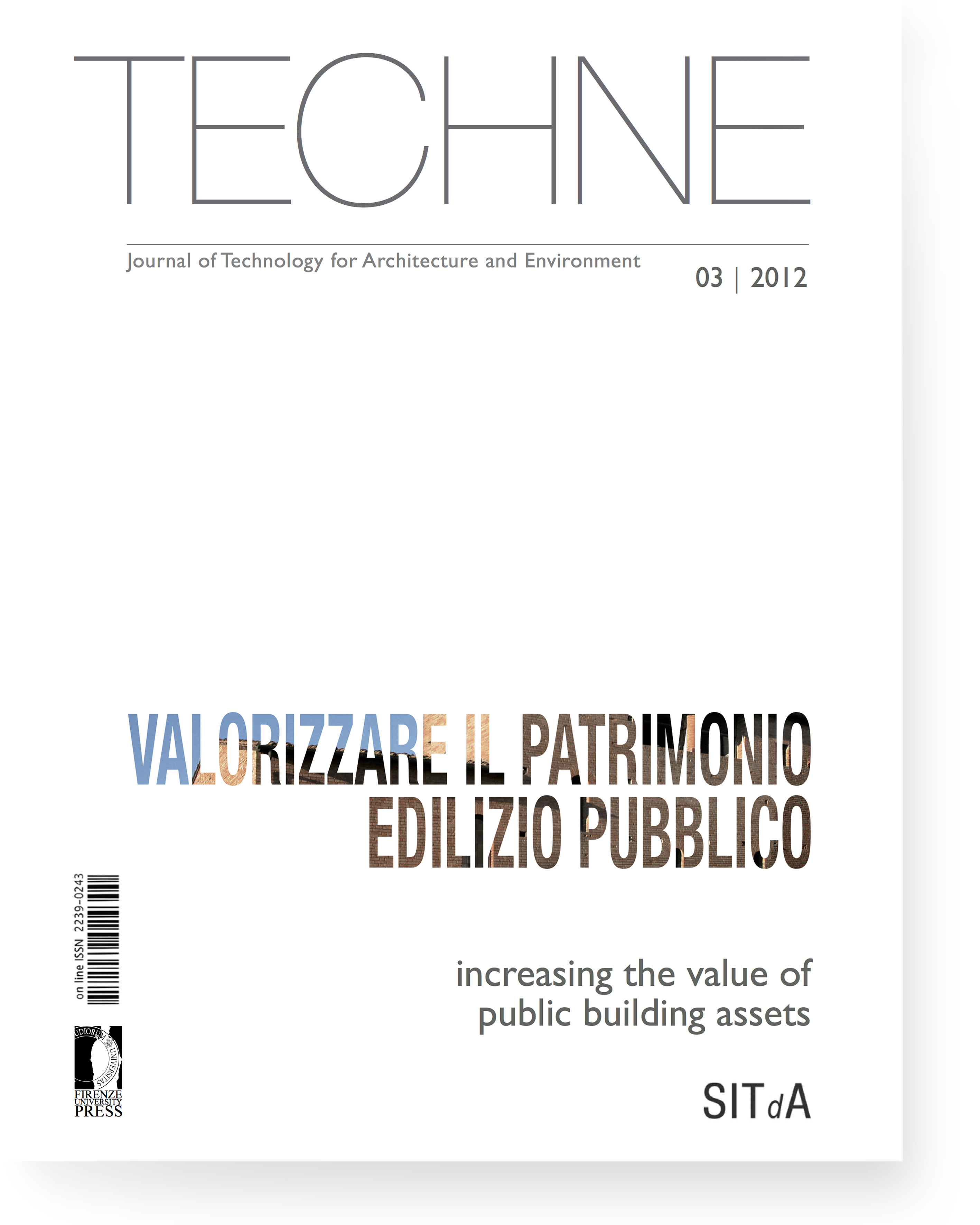Essays and Viewpoint
Published 2012-04-30
Keywords
- Urban regeneration,
- Quality of public space,
- Suburbs,
- Public real estate
How to Cite
Favaron, F. (2012). Improvement and alienation of public real estate. TECHNE - Journal of Technology for Architecture and Environment, 3(1), 85–89. https://doi.org/10.13128/Techne-10867
Abstract
Most of the Italian cities have been in crisis through the last decades, not being able anymore to guarantee the needs and expectations of their inhabitants, due to the lack of fundamental services, mobility, places of aggregation and attraction. The housing growth since Second World War, answering almost only to the needs of speculation and revaluation of landed revenue, produced anonymous and degraded suburbs, contributing to cancel a fundamental part of our communities’ history and culture. The crisis of the cities has clashed with the architectural one.Through sustainable regeneration, identified by the Italian architects as the greatest opportunity for revitalizing the cities and develop the country, we need to sustain interventions based on high architectural quality, besides innovative energetic, environmental and social requalification standards.
It is now as never fundamental to extend the city effect from the centre to the far end suburbs, upgrading the public element, integrating the services and proposing new polarities able to interact in a synergic and propaedeutic way with the city centre. Within these settings, involving public agencies and resources with private companies and capitals, the new conversion, development and alienation of the public real estate (valued more than 400 billions €), represent a unique chance to redefine and regenerate the cities, apart from being an extraordinary opportunity to drop the debt and rationalize the local government expenses. To provide powerful infrastructures, aimed cultural policies, sustainable and environmental developments plans, are the biggest challenges to make our cities the most important investment on our future.
Downloads
Download data is not yet available.






